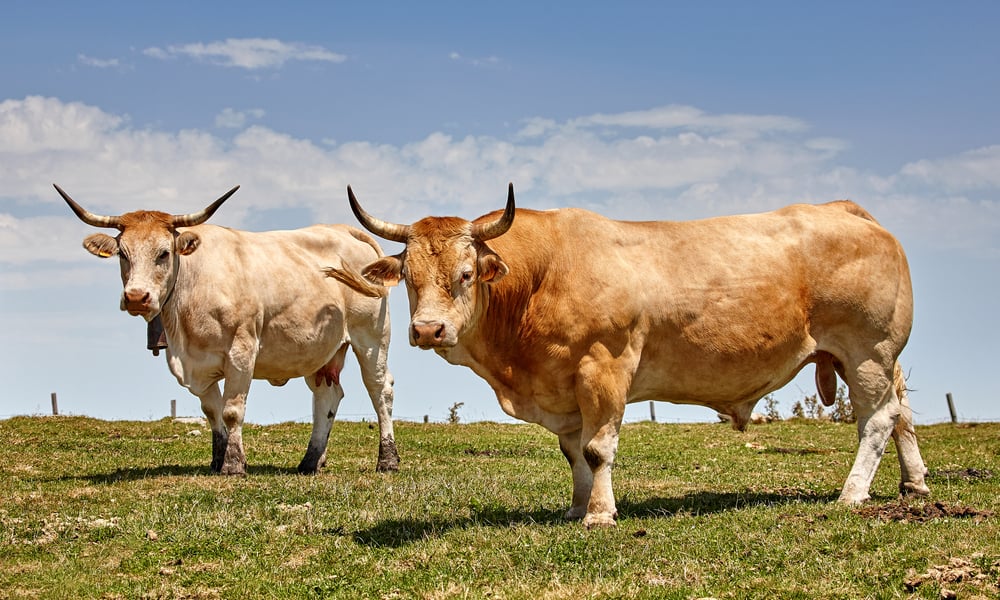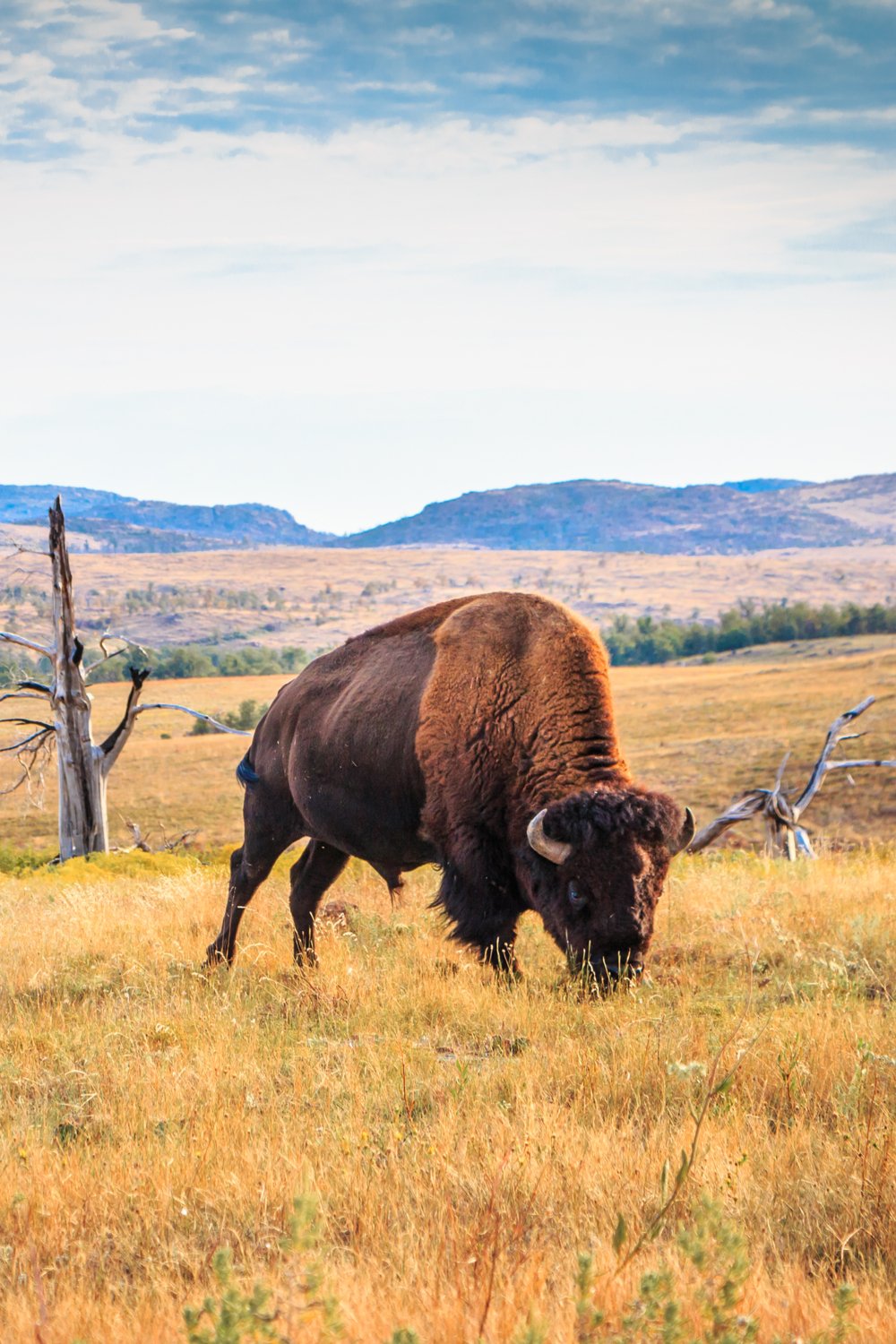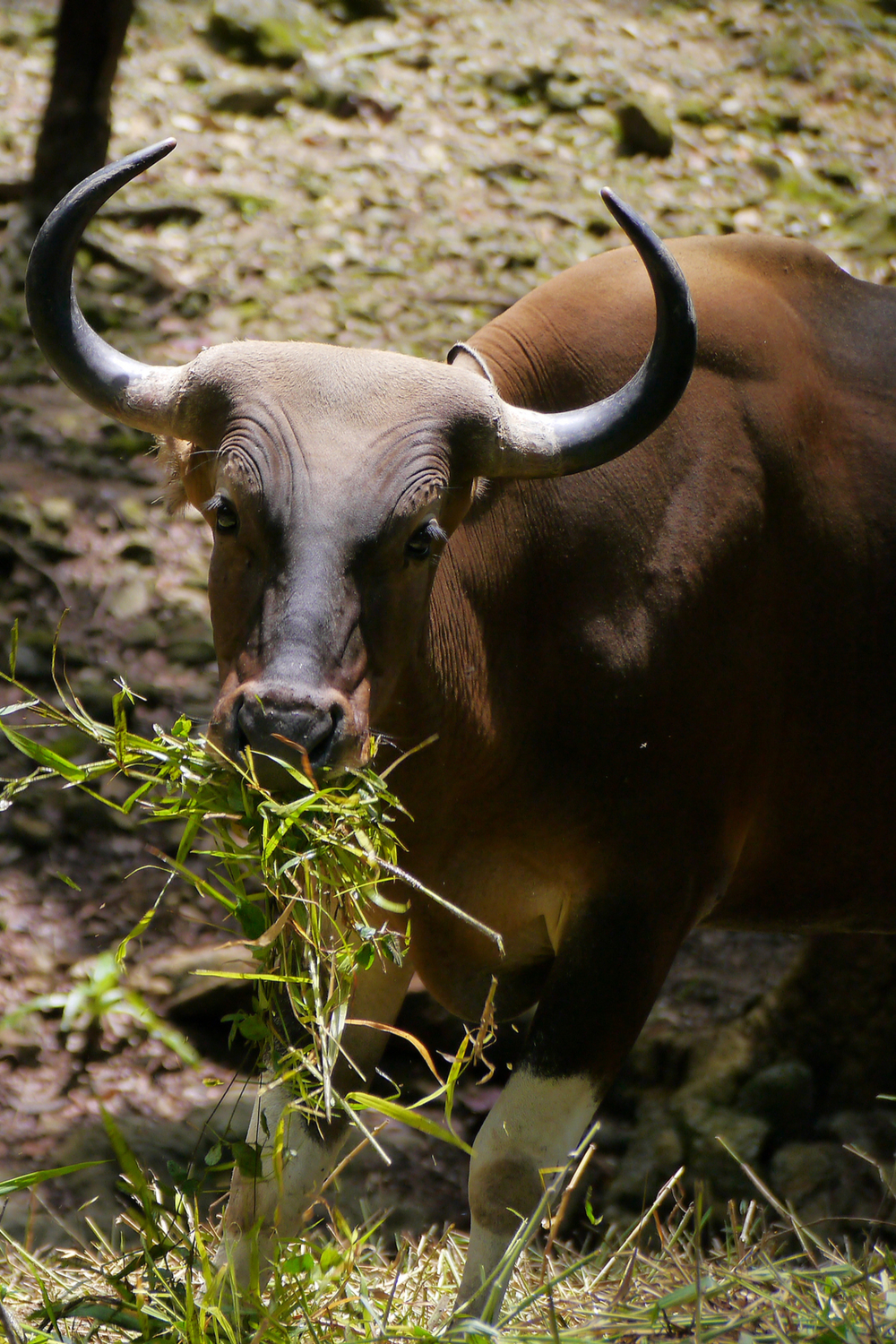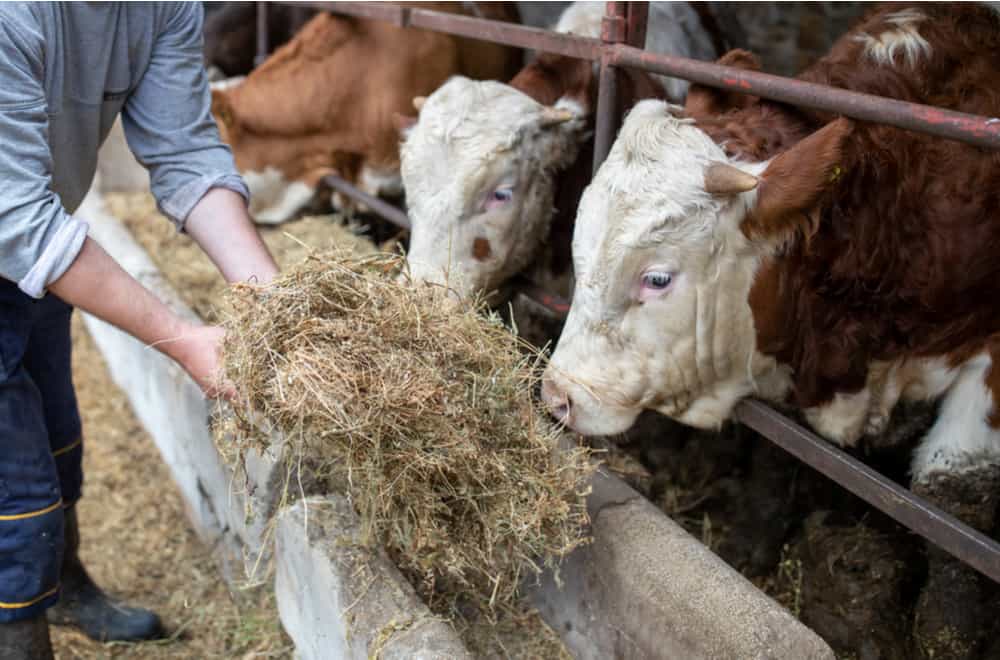Bulls are one of the most recognizable animals in the world. Since ancient times, humans have respected this species for its potency and strength. Over time, bulls were domesticated, and nowadays, we use them for their meat and cattle breeding. They have a major cultural significance in certain countries, and people utilize them for activities like bull riding and bullfighting.
In this article, we will answer the question, “What do bulls eat?”
Bulls Habits and biology
Bulls are renowned for their powerful physique. They are stronger than cows, with visible muscles and thick necks. These animals have big feet, strong bones, and big boney heads.
Over the years, people cultivated bulls, so they have even more pronounced physical attributes. We use stronger animals for bull riding and bullfighting and controlled breeding as they carry better genes. Even in nature, stronger bulls are more likely to attract cows and reproduce with them.
Bulls don’t have long hair or fur. The only exceptions are the head and neck area, which might have strong follicles with wooly texture. While these animals are very similar to cows in terms of height, there is a major difference in weight. One of the bull’s more pronounced physical features is its broad, strong shoulders.
It is a common misconception that cows don’t have horns, and bulls do. But this has to do with breed and whether the owners disbudded them. The bull’s horns tend to be shorter than that of cows but significantly denser. Like with some other relatives, they curve straight instead of up.
Here are some of their common habits and behavioral traits:
- Bulls and cows communicate by using a mixture of visual and vocal gesticulation. Besides mooing, they can position their tail and body in certain ways to signify a challenge, mating desire, or warning.
- These animals are very aggressive, especially when around females. You can’t say the same about the cows, although they will attack if you endanger their offspring. Bull’s horns are very dangerous and can potentially lead to severe wounds, impairment, and death.
- At the height of its strength, an adult bull can challenge some of the fiercest wild animals, including tigers, bears, and lions.
- Bulls are not very social, which is one of the reasons for high levels of aggression. Sometimes, they will live alone for several months without having contact with any one of their species. The same cannot be said about cows which are more social and used to living in herds.
What do bulls like to eat most?
The general rule for feeding bulls is to give them approximately 2% of their body weight in food. An adult will need 46% of nutrients and 7% of proteins. If a bull is young and developing, it will have even higher nutritional requirements. Given that an average bull weighs between 1,700 to 2,400 pounds, you will have to give it 34 to 48 pounds of food a day.
Bulls need a diverse diet with minerals such as zinc, selenium, iodine, and iron. Here are the main types of foods you can give to a bull:
- Grains
- Oilseeds
- Silage
- Roughage
Each category provides a certain benefit to the animal. Occasionally, you can even give them certain food that was previously processed for humans. A good example of this would be bakery waste and distiller grain. However, make sure to stick with the previous four categories as the bulk of its diet.
Roughages are a group of indigestible substances. They include things such as silage, grass, and hay. Although not particularly nutritious, roughages will give the bull enough fibers so that it has good digestion. As such, they will keep the animal’s tissue healthy. Therefore, these substances should represent the majority of the bull’s diet.
Grains are the complete opposite of roughages; they don’t have many fibers, but they are a crucial energy source. Some of the grains you can give to the bull include oats, barley, and corn. Use all this food in moderation by mixing it up with roughages.
Silages are all the substances we process in silos, which is how they got their name. They are a type of vegetation that should be kept moist and warm such as grass and corn silage. Bulls also need a lot of these substances. Lastly, the animal will also need canola seeds and soybeans to provide a mixture of fibers, proteins, and energy.
Like all other animals, bulls like occasional treats. This is a good way to motivate them before breeding, bullfighting, or rodeo. Treats can also be a good way to help a depressed animal. You can give them things such as carrots, cabbage, apples, potatoes, cauliflower leaves, and so on. They also like clovers, various flowery leaves, fireweed, and molasses.
Food avoid feeding Bulls
Although bulls eat various types of grass, seeds, and grains, you should never offer certain types of food. If the animal eats one of these things, it might experience symptoms such as diarrhea, liver toxicity, depression, weakness, etc. Here is the list of foods you should avoid giving to the bull:
- Flix weed
- Goldenbanner
- Mountain mahogany
- Milkvetch
- Butterfly milkweed
- Stinkweed
- Wild false indigo
- Tall mannagrass
- Yellow toadflax
- Sunflower
- Burdock, etc.
It is hard to put all the flowers on one list. The animal cannot process more than 100 plant species, so you need to avoid lots of things. If you have limited experience with bulls, you should focus on the same tried-and-tested foods. You can also inquire with a veterinary or bull specialist for additional information.
Sometimes, a bull might eat something growing on your property and start feeling sick. This is why you need to examine all the plant species in the vicinity and, if necessary, eradicate them before you start a farm. Given that bulls are such large animals, a small quantity of allergen probably won’t cause any issues. But the problem occurs if the field is full of this plant and the animal eats it every day.
Besides plants, other species can also cause trouble. For example, bulls are allergic to insects such as blister beetles. You can find these insects in states from New Mexico to California. Although bulls will not eat the insect, they will eat hay that was infected by the species.
Sometimes, bull owners make a mistake by giving their animals bad food. Copper poisoning is a common issue that many people encounter. This is a normal bull food supplement, but when the animal accumulates large quantities of the mineral, it can experience poisoning.
Lastly, we need to consider excessive feeding. Grain overload can cause the accumulation of lactic acid that will dehydrate the animal, occasionally leading to death. Most people want their bulls to be big and strong, but a person should still be precautious when giving food.
Tips to feed Bulls
Although a bull’s wellbeing, reproductive function, and strength are crucial, you need to be efficient when feeding the animal.
Every bull owner should start by learning more about nutritional requirements. The amount of food varies based on the bull’s age and weight, but also the season. During the winter, when animals are less active, they won’t need as many nutrients.
Another thing that many bull owners do is test the hay. Not only does this determine the quality, but it also indicates the presence of certain toxins. It is a common practice to add supplements to the animal’s food. Besides protein supplements, bulls benefit from minerals like zinc and iron.
An efficient way to manage a large bull herd is by categorizing them by their age and condition. The animals have completely different requirements based on these factors, so it can be a real problem to feed every bull separately. Keep in mind that this species loses between 100 to 400 pounds when its breeding period.
The animal is very susceptible to cold. It causes bulls a lot of stress leading to reduced fertility during the next breeding cycle. Bulls need more than 60 days to produce sperm. This is one of the main reasons some farmers have subpar results at the beginning of the breeding season. A way of countering all these issues is by providing a suitable shelter for bulls during winter. They need to have open access to a barn so they can retreat whenever they feel cold out in the pasture.
According to experts, a yearling bull needs to have a condition score between 5.5 to 6.5 before the breeding cycle. No matter what, most of the animals will require some tweaks in their diet before breeding. However, an owner needs to make these changes gradually. Depending on the situation, an animal will require more or less concentrated food. Otherwise, they might encounter metabolic issues.
Summary
Bulls are one of the most iconic animals in European and American culture. Over time, they’ve inspired many authors and artists.
Nowadays, bulls are domesticated animals mostly used in cow breeding. But, in some parts of the world, they are exploited for rodeo and bullfighting.
The animal eats silage, roughage, grains, and oilseeds. Their nutritional requirements may vary significantly based on the animal’s age and weight.




How interesting that you mention how to manage a large bull herd. My son and I have never been to a rodeo and really want to see a bucking bull especially. I will find an excellent bucking bull event nearby.